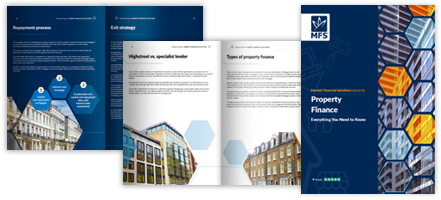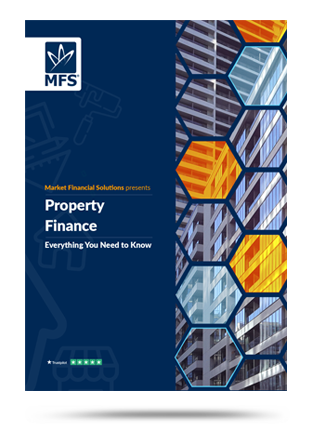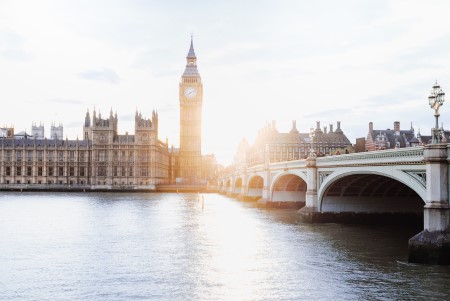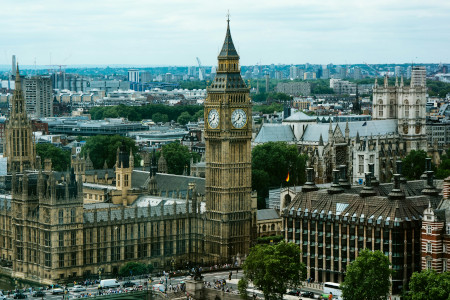Market Financial Solutions are a bridging loan and buy-to-let mortgage provider and are not legal, financial, investment or tax advisers. This document is for informational purposes only and does not, and should not be considered, to constitute legal, financial, investment or tax advice or be relied upon by any person to make a legal, financial, investment or tax decision. Therefore, Investors are encouraged to seek appropriate professional advice. The information in this content is correct at time of writing.

The property market is by nature, always in a state of flux. If you told someone from the 1980’s what King’s Cross was like now, I would bet that they probably wouldn’t believe you. Investors in the property sector, therefore, could benefit from having their finger on the pulse of the dynamic nature of the market at all times.
Such is the case with regeneration zones in the UK. What do investors need to know if they’re looking at urban renewal areas as the next step on their property journey?
A regeneration zone is an area that has been identified by governments and/or authorities as being dilapidated, underutilised and in need of revitalisation[1].
The aim for these areas is to draw in investment, diverse industries and renovation to improve the lives of local communities and help economic prosperity.
While the regeneration process in the UK has been underway for decades, new legislations and rapid changes affecting the market make the process just as relevant as ever for those interested in the property sector.
Regeneration = Gentrification?
When talking about regeneration, it is key to note that the term has seen some controversy over the years. Hence, the distinction between regeneration and gentrification is a fundamental one to make.
Gentrification is the term used to describe the process of converting predominantly working-class areas into homogenous middle-class hubs, essentially raising prices and pushing local people out of the area, all while removing the authenticity that creates its charm[2].
Regeneration, does not – and should not – need to have the same outcome. When done correctly, it can be a mutually beneficial process for both locals and investors.
Local communities could see many potential benefits from the increase in jobs that comes about through commercial properties, as well as the improved living prospects from residential property investment.
Furthermore, without falling into the trap of cultural homogeny, the area can maintain that je ne sais quois that will further draw in attention and prosperity.
If investors are cautious of maintaining the uniqueness of the area through the process, the social benefits could stand to be significant.
What’s in it for the investors?
What factors can investors consider when thinking about investing in these areas, particularly from a financial gain standpoint? Generally, properties in these areas can be acquired at relatively lower prices. Through the process of regeneration, which will include more businesses and better transport links, they may continue to increase in value, which can help create long term capital growth as well as a profitable rental yield.
Examples of areas within London going through large scale regeneration include Canada Water, with 1000’s of new homes being built with the added benefit of excellent transport links, as well as Tottenham Hale; which is set to benefit from a new town centre, a renovated station and more residential properties[3].
Therefore, having the foresight to invest in areas that are likely to see prosperity could be an excellent investment strategy – dependent on the goals of the investor.

1. Flip and Sell
This can be great news for those interested in flipping and selling as well. Regeneration zones tend to be rich in structures with a solid foundation but have perhaps not been maintained to their full potential.
According to insights by Fisher German, there has been an increase towards renovating older, historic buildings due it being a more efficient process[4].
And since we know that property values in these areas tend to rise faster, it is fair to deduce from the statistics that this kind of an investment could result in a higher return[5].
2. Buy-to-let
As rental demand continues to grow in 2024, coupled with interest rates stabilising, buy-to let mortgages could still be a fruitful investment option, again, depending on the investor’s goals. Specifically in regenerating areas, the rental yield tends to be following an upward trajectory[6].
Statistics show that sentiments around regeneration are largely positive from people who live within the areas, and even more so with people outside, or those who regularly visit[7]. This could be a solid indication of the popularity of these zones, with locals wanting to retain residence, and outsiders wanting to potentially move in.
With rates of people going back to the office being at an all-time high since the pandemic, urban renewal zones could be a good option for those looking to rent to young professionals, many of whom are attracted to the idea of living in an up-and-coming area[8] but aren’t in the position to be buying just yet.
Some areas with exceptional buy-to-let prospects include Manchester, Birmingham and Nottingham[9]. Along with the significant regeneration projects these cities are going through, they are also student centred, which makes them highly popular with renters.
3. Commercial property investment
When thinking about areas undergoing regeneration, we cannot ignore investment zones. These are 12 key areas in the UK where the government hopes to attract private sector businesses, particularly in sciences, tech and creative industries[10].
While not all regeneration zones are investment zones, they to tend to overlap. Commercial property investors perhaps have the most to think about when it comes to these.
There can be some fantastic incentives for people to invest into commercial properties in these areas. These incentives often come in the form of government grants, tax reliefs and reduced red tape[11].
An example of this is the Stamp Duty Land Tax (SDLT) relief, which investors can take advantage of when buying property, granted it is used for the qualifying commercial purposes[12]. This can also be applied to multi-use buildings as long as 90% of the purchase price is for the intended commercial purposes. If less than 90% is applicable, you can still get the tax relief for the amount that is used for the commercial purposes.
Conclusion
Ultimately, whether or not investors decide to explore opportunities in regeneration zones depends entirely on what they want out of their investment, and what their long-term goals are. With that being said, we have explored various investment options for which these areas can be exceptional, especially for those looking to diversify their portfolio.
The Complete Guide to
Property Finance
Everything you need to know
- Foundation & different finance types
- Useful tools
- Apply them in real life
- Market insights & more
[1] https://www.finance-monthly.com/2023/04/investing-in-regeneration-areas-what-should-i-know/
[2] https://www.capitalandcentric.com/journal/gentrification-or-regeneration-the-tussle-is-a-symptom-of-city-growing-pains
[3] https://www.homeviews.com/buying/property-investment-london-development-hotspots-for-future-growth
[4] https://www.rw-invest.com/uk/should-you-invest-in-regenerated-buy-to-lets-or-new-builds-in-2024/
[5] https://www.rw-invest.com/uk/should-you-invest-in-regenerated-buy-to-lets-or-new-builds-in-2024/
[6] https://www.finance-monthly.com/2023/04/investing-in-regeneration-areas-what-should-i-know/
[7] Trowers & Hamlins: Rethinking Regeneration
[8] https://www.northpropertygroup.co.uk/news/central-londons-regeneration-projects-beckon-investors/
[9] https://www.countready.co.uk/uks-buy-to-let-best-areas/
[10] https://forthactioninvest.co.uk/key-changes-from-the-spring-budget-2024-that-impact-property-investors/
[11] https://redcardinal.co.uk/advantages-of-regeneration-area-investment/#:~:text=Increased%20Property%20Values%3A%20One%20of,resulting%20in%20enhanced%20property%20values.
[12] www.gov.uk






